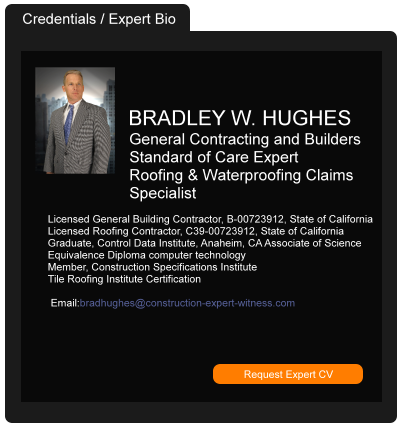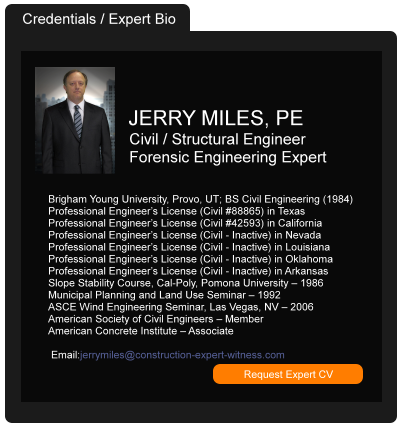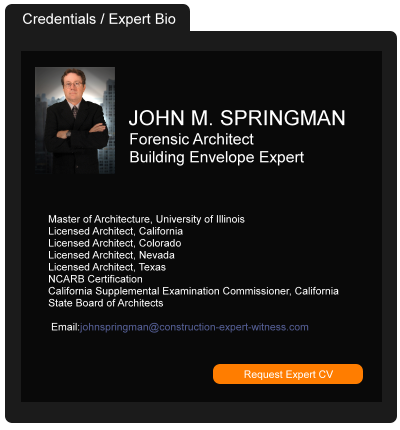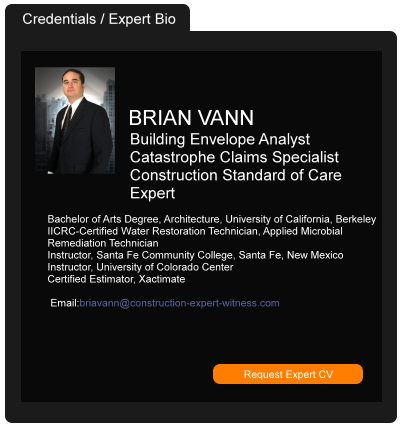Is New York Heading for a Construction Defect Boom?
March 12, 2015 —
Beverley BevenFlorez-CDJ STAFFThe New York Times reported that “[t]here is growing concern that some developers are repeating the mistakes of the last housing boom and delivering substandard product.”
“My phone is ringing already on projects that were just completed,” Steven D. Sladkus, a Manhattan real estate lawyer who says his firm has dozens of active construction defect cases, told the New York Times. “Uh-oh, here we go again.”
Recent data shows a rising trend of building plans in New York: “Last year, the city issued construction permits for 20,300 units of housing, according to the Real Estate Board of New York. And the state attorney general’s office received submissions for 263 offering plans for condo conversions and new construction in 2014, up from 184 in 2011. Those numbers will most likely grow in 2015, encouraged by Mayor Bill de Blasio’s push to build more housing.”
Read the court decisionRead the full story...Reprinted courtesy of
To Require Arbitration or Not To Require Arbitration
December 31, 2014 —
Christopher G. Hill – Construction Law MusingsMany, if not most, construction contracts that I review during the course of my practice day include a mandatory arbitration clause. Most of these refer in a blanket manner to AAA Construction Industry Rules. The topic for this post is not whether such clauses are enforceable or whether they are one tool in the contracting tool box in a state where the contract is king. I picked the title of this post carefully because I wanted to discuss whether such clauses should be required as a routine part of all construction contracts and, if so, how those clauses can and should be written.
I have previously shared my thoughts on mandatory arbitration and its desirability in numerous spots here at Construction Law Musings (you can search arbitration or check out the ADR page for more). In short, my opinion is that arbitration was initially conceived with the purpose of streamlining the dispute resolution process and to correspondingly lower the costs associated with such dispute resolution. Arbitration, when used correctly, can, in certain very industry specific cases, help by using an arbitrator or panel of arbitrators that have some expertise in the particular area of the construction industry or the particular specialized issue that will turn the case one way or the other. All of these goals are good and I applaud them.
Read the court decisionRead the full story...Reprinted courtesy of
Christopher G. Hill, Law Office of Christopher G. Hill, PCMr. Hill may be contacted at
chrisghill@constructionlawva.com
Attorneys' Fees Awarded "Because Of" Property Damage Are Covered by Policy
August 29, 2018 —
Tred R. Eyerly - Insurance Law HawaiiThe Ninth Circuit upheld the District Court's decision that the insured Association of Apartment Owners was entitled to coverage for the attorneys' fees incurred [prior post here].Assoc'n of Apartment Owners of the Moorings, Inc. v. Dongbu Ins. Co., Ltd., 2018 U.S. App. LEXIS 20251 (9th Cir. July 20, 2018).
The District Court for the District of Hawaii granted summary judgment to the AOAO, requiring Dongbu to indemnify the AOAO for an award of attorney's fees that an arbitrator ordered the AOAO to pay to the underlying claimants. The claimants prevailed on a claim that their condominium unit incurred water damage due to a common roof leak. Dongbu's policy required it to reimburse those sums that the AOAO was legally obligated to pay as damages because of property damage. The AOAO became legally obligated to pay the claimants' fees once the state court confirmed the arbitration award. Further, the water damage to the home constituted covered property damage under the policy.
Read the court decisionRead the full story...Reprinted courtesy of
Tred R. Eyerly, Damon Key Leong Kupchak HastertMr. Eyerly may be contacted at
te@hawaiilawyer.com
Additional Elements a Plaintiff Must Plead and Prove to Enforce Restrictive Covenant
April 19, 2021 —
David Adelstein - Florida Construction Legal UpdatesFlorida Statute s. 542.335 is a statute that deals with restrictive covenants in contracts that impose a restraint on trade. It is an important statute to determine invalid restraints on trade that unreasonably or unfairly prevent competition. Any invalid restraint on trade is unenforceable. Restrictive covenants–or covenants in agreements that restrict you or prevent you from doing something–may unsuspectingly be included in contracts or the impact of the restrictive covenant may not be appreciated at the onset.
A party seeking to enforce a restrictive covenant in a contract has the additional burden of PROVING the validity and reasonableness of the restrictive covenant:
Under section 542.335, three requirements must be satisfied for a restrictive covenant to be enforceable: (1) the restrictive covenant must be “set forth in a writing signed by the person against whom enforcement is sought”; (2) the party seeking to enforce the restrictive covenant “shall plead and prove the existence of one or more legitimate business interests justifying the restrictive covenant”; and (3) the party seeking to enforce the restrictive covenant “shall plead and prove that the contractually specified restraint is reasonably necessary to protect the legitimate business interest or interests justifying the restriction.”
Read the court decisionRead the full story...Reprinted courtesy of
David Adelstein, Kirwin Norris, P.A.Mr. Adelstein may be contacted at
dma@kirwinnorris.com
Settling with Some, But Not All, of the Defendants in a Construction Defect Case
March 28, 2018 —
David Adelstein – Florida Construction Legal UpdatesConstruction defect lawsuits can be complex multi-party disputes, especially when the plaintiff is doing what is necessary to maximize recovery. This means the plaintiff may sue multiple defendants associated with the defects and damage. For example, the owner (e.g., plaintiff) may sue the contractor, subcontractors, design professionals, etc. due to the magnitude of the damages. In many instances, the plaintiff is suing multiple defendants for overlapping damages. The law prohibits a plaintiff from double-recovering for the same damages prohibiting the windfall of a plaintiff recovering twice for the same damages. Perhaps this sentiment is straight common sense, but this sentiment is a very important consideration when it comes to settling with one or more of the defendants, while potentially trying the construction defect case as to remaining defendants.
Analysis and strategy is involved when settling with some but not all of the defendants in a construction defect case (and, really, for any type of case). Time must be devoted to crafting specific language in the settlement agreements to deal with this issue. Otherwise, the settlement(s) could be
set-off from the damage awarded against the remaining defendants.
The recent decision in
Addison Construction Corp. v. Vecellio, 43 Fla.L.Weekly D625(a) (Fla. 4th DCA 2018) details the analysis and strategy required when settling with some but not all of the defendants in a construction defect case, and the concern associated with a trial court setting-off the settlement amount from the damage awarded against the remaining defendants.
Read the court decisionRead the full story...Reprinted courtesy of
David Adelstein, Florida Construction Legal UpdatesMr. Adelstein may be contacted at
Dadelstein@gmail.com
Florida Appellate Court Holds Four-Year Statute of Limitations Applicable Irrespective of Contractor Licensure
June 22, 2016 —
Clay Whittaker – Florida Construction Law UpdateIn Brock v. Garner Window & Door Sales, Inc.,[1] Florida’s Fifth District Court of Appeal rejected a novel attempt to circumvent Florida’s well-established four-year statute of limitations for all actions founded on the construction of an improvement to real property. Plaintiff filed a lawsuit alleging breach of contract as a result of water intrusion damage following the installation of windows.[2] It was undisputed that Plaintiff commenced the litigation more than four years following the discovery of the allegedly latent defect in the window installation.[3] Plaintiff’s counsel argued that the window contractor could not rely on the four-year statute of limitations because the window subcontractor was not a licensed contractor and, therefore, the five-year statute of limitations for actions founded on written contracts should apply.
Read the court decisionRead the full story...Reprinted courtesy of
Clay Whittaker, Cole, Scott, & Kissane, P.A.Mr. Whittaker may be contacted at
clay.whittaker@csklegal.com
How Your Disgruntled Client Can Turn Into Your Very Own Car Crash! (and How to Avoid It) (Law Tips)
January 21, 2019 —
Melissa Dewey Brumback - Construction Law in North CarolinaOver the summer, I was involved in a car crash. It was *not* my fault– heck, I wasn’t even driving but riding shotgun. But it wasn’t my husband’s fault either. A guy pulling out of a parking lot was watching the traffic coming up the road, but failed to see our car sitting in the same intersection waiting to turn into the same parking lot. He ran right into us.
It may not look like much, but the panels were so damaged it cost almost $9k in damages, over a month of car rental fees, and a LOT of aggravation on our part. The guy who hit us was very nice, apologized, and was concerned if we were injured. His insurance company ultimately paid for all of the damage. However– it wasn’t he who suddenly got a new part time job– that was me. I had to spend lots of time with police, insurance representatives, auto body mechanics, rental car places, you name it. If you’ve ever been in an accident, you know the headache involved. In fact, I have had 2 other accidents over the years (again, neither of which were my fault– I think I’m just a beacon for bad drivers?). One of those accidents was a 4 car accident– a driver hit my car, pushing it into the car ahead, which went into the car ahead of that. In that accident, my car was actually totaled. Fun times!
How is this relevant to your life as an architect or engineer? If you stay in the game (that is, the design field) long enough, chances are, you will, at some point, end up dealing with disgruntled clients. One of those clients may even file a lawsuit against you. Or, for that matter, you may end up getting sued by another party involved in your construction projects– one that you don’t even have a contract with.
Read the court decisionRead the full story...Reprinted courtesy of
Melissa Dewey Brumback, Ragsdale Liggett PLLCMs. Brumback may be contacted at
mbrumback@rl-law.com
The U.S. Tenth Circuit Court of Appeals Rules on Greystone
November 18, 2011 —
Derek J. Lindenschmidt, Higgins, Hopkins, McLain & Roswell, LLCOn November 1, 2011, the Tenth Circuit Court of Appeals ruled on the certified question of whether property damage caused by a subcontractor’s faulty workmanship is an “occurrence” for purposes of a commercial general liability (CGL) insurance policy. In Greystone Const., Inc. v. National Fire & Marine Ins. Co., No. 09-1412 (10th Cir. Nov. 1, 2011), the Tenth Circuit determined that because damage to property caused by poor workmanship is generally neither expected nor intended, it may qualify under Colorado law as an occurrence and liability coverage should apply. Id. at 2.
The short history of the Greystone case is as follows. In Greystone Const., Inc. v. National Fire & Marine Ins. Co., 649 F. Supp. 2d 1213 (D. Colo. 2009), two contractors and one of their insurers brought an action against a second insurer after the second insurer refused to fund the contractors’ defense in construction defect actions brought by separate homeowners. Id. at 1215. The U.S. District Court for the District of Colorado, relying on General Sec. Indem. Co. of Arizona v. Mountain States Mut. Cas. Co., 205 P.3d 529 (Colo. App. 2009), granted summary judgment in favor of the second insurer on the basis that the homeowners’ complaints did not allege accidents that would trigger covered occurrences under the second insurer’s policies. Id. at 1220. Notably, the Greystone, General Security, and other similar decisions prompted the Colorado General Assembly to enact C.R.S. § 13-20-808, which was designed to provide guidance for courts interpreting perceived coverage conflicts between insurance policy provisions and exclusions. The statute requires courts to construe insurance policies to favor coverage if reasonably and objectively possible. C.R.S. § 13-20-808(5).
The Tenth Circuit began its analysis by determining whether C.R.S. § 13-20-808, which defines the term “accident” for purposes of Colorado insurance law, would have a retroactive effect, and thereby settle the question before the court. The Tenth Circuit gave consideration to several Colorado district court orders issued since the enactment of C.R.S. § 13-20-808 which have suggested that the statute does not apply retroactively, including Martinez v. Mike Wells Constr., No. 09cv227 (Colo. Dist. Ct., Mar. 1, 2011), and Colo. Pool. Sys., Inv. V. Scottsdale Ins. Co., No. 09cv836 (Colo. Dist. Ct., Oct. 4, 2010). The Tenth Circuit also attempted to ascertain the General Assembly’s intent behind the term “all insurance policies currently in existence...” Greystone, No. 09-1412, at 12. The Tenth Circuit determined that the General Assembly would have more clearly stated its intentions for the term if it was supposed to apply retroactively to expired policies, rather than those still running. Id. at 12-13. Ultimately, the Tenth Circuit decided that C.R.S. § 13-20-808 did not apply retroactively, but noted that “the retrospective application of the statute is not necessarily unconstitutional.” Id. at 9, 11-14. As such, the Tenth Circuit advised that it was required to decide the question presented in the appeal under the principles of Colorado insurance law. Id. at 15.
Read the full story…
Reprinted courtesy of Higgins, Hopkins, McLain & Roswell, LLC. Mr. Lindenschmidt can be contacted at lindenschmidt@hhmrlaw.com
Read the court decisionRead the full story...Reprinted courtesy of


































































